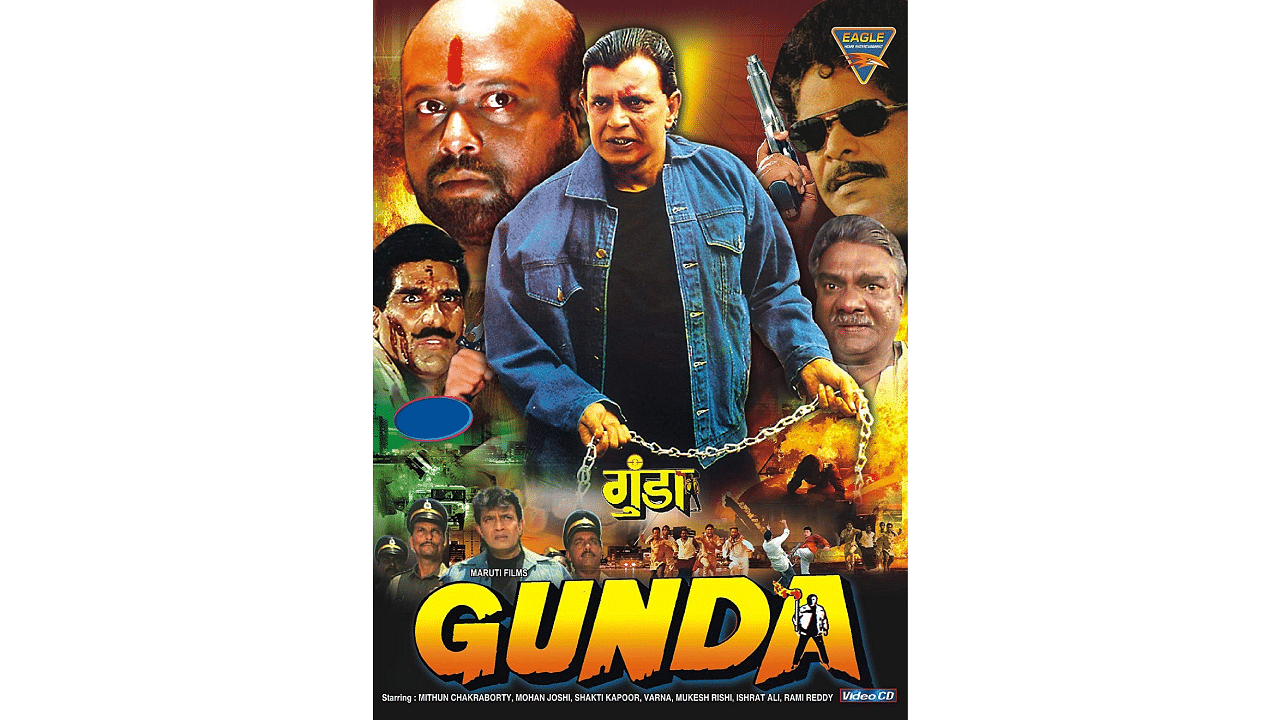
Mithun Chakraborthy starred in Gunda.
Credit: Special Arrangement
In the 1980s in India, walls plastered with posters of B-grade and C-grade films was a common sight. Many of the kitschy Hindi movies of the ’80s often drew inspiration from the ‘colourful’ Tamil, Telugu and Malayalam films.
The popularity of B-grade movies in India during the 1980s can be attributed to the advent of television and VCR technology. As renting these devices became easier, movie enthusiasts found it more convenient to watch these tapes from the comfort of their homes than going to movie theatres.
The movies, with their outlandish costumes, suggestive dialogues, and pulsating music, became a sanctuary where inhibitions were shed, and fantasies explored.
In the 1980s, a significant portion of the Hindi film industry operated within the confines of clichés, success formulas, and celebrity stardom. Producers unable to secure big stars such as Amitabh Bachchan, resorted to creating multi-starrer films filled with a haphazard combination of any available actors. This led to a disproportionate emphasis on assembling the cast, with little attention given to script development. The cinematic wrapper for such movies was the B-grade formulae.
Another substantial expenditure was extravagant and flamboyant costumes, along with oversized tables that took center stage in song sequences. The formula often included a scantily clad heroine, within the limits set by censor regulations, surrounded by numerous extras engaged in lively dance routines (remember the movie ‘Himmatwala’?). It's important to note, without any gender bias, that the allure of voluptuousness and energetic dance movements significantly contributed to the films’ appeal.
Sridevi in 'Himmatwala'.
Credit: Special Arrangement
Each movie adhered to a structured format, featuring action sequences, drama, romance, comedy, horror and more, meticulously divided into convenient segments to ensure a comprehensive viewing experience. A common fixture was a sidekick comedian, engaging in comedic antics with little to no connection to the main storyline.
It was common for superstars to don shiny, metallic costumes in early 80s’ Bollywood movies. As for the heroines, the mantra was clear: the more frequent and loud the costume changes, and the more garish the makeup, the better. One can’t forget the popularity and commercial success of movies like Gunda, Jallad No 1, Veerana and Kacchi Jawani.
Kulbhushan Kharbanda in 'Veerana'.
Credit: Special Arrangement
Despite the fact that most of these kitschy film songs commodified the female body and objectified women, there was a lack of public discourse on whether such gender role stereotyping and sexism influenced public behaviour. Undoubtedly, most from that era indulged in the voyeuristic pleasure and clandestine lascivious glances at the infamous C-grade movie posters, synonymous with softcore content.
B-grade movies screenings were a communion of kindred souls seeking an escape, a respite from the monotony of everyday life in the conservative folds of middle class existence. These films provided an unorthodox yet authentic portrayal of the human experience, embracing imperfections and blemishes. Despite their sub-par execution, plot development, technical aspects, and acting, as judged by mainstream standards, these movies resonated with audiences.
It's unsurprising that B-grade movies have endured over time, persisting even in the contemporary landscape. Their enduring popularity suggests a lasting connection with audiences seeking a departure from the complexities of everyday existence.
The ’80s is often referred to as the “lost decade” in Hindi cinema. But it’s a belief held by those who do not understand the value of B-grade cinema. As times have evolved and societal norms become more open to discussing once-taboo subjects, these movies have found the perfect space on OTT platforms.